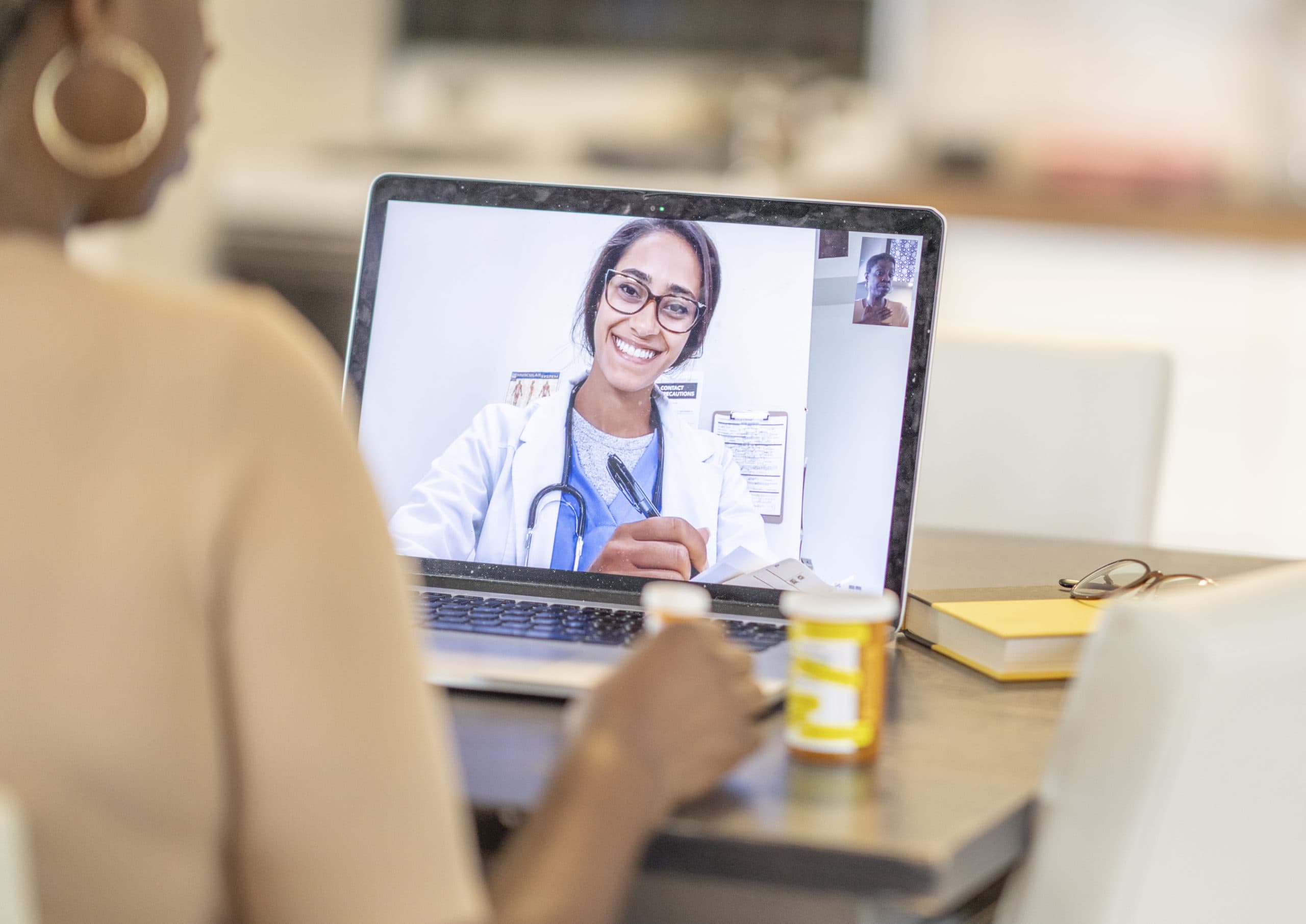UAMS Surpasses 100,000 Digital Health Visits in Pandemic
| LITTLE ROCK — The University of Arkansas for Medical Sciences (UAMS) conducted more than 100,000 digital health visits following the COVID-19 outbreak that strictly limited in-person appointments and medical procedures over one year ago.
UAMS saw its highest numbers of virtual consultations at the height of the pandemic and during February’s winter storm, performing more than 4,500 digital health visits per week. Now that patients have returned for in-office appointments, UAMS currently averages about 2,000 digital health visits weekly.
“Digital health has been a great benefit to patients and providers, allowing people to receive care when an in-person visit is not feasible or not desired by a patient,” said Joseph Sanford, M.D., director of the UAMS Institute for Digital Health & Innovation. “By offering a variety of digital health visits, we have been able to conveniently meet our patients’ needs, wherever they live.”
Under the provisions of a public health emergency, as COVID-19 was labeled, digital health visits include interactive video conferences, phone consultations, electronic correspondence and remote patient monitoring, allowing providers to check on their patients from miles away and to ensure chronic health and preventative medical needs are met.
Prior to the pandemic, only a few providers utilized digital methods for consultations. Since then, 1,090 UAMS providers have used digital health visits to meet with patients.
“Our virtual platform provided a face-to-face connection that patients yearned for when asking questions, calming fears or needing reassurance, especially during the start of and at the height of the pandemic,” said Stacy Petty, APRN, director of UAMS HealthNow.
UAMS HealthNow offers 24-hour virtual urgent care that connects patients with providers to assess and treat minor injuries and illnesses through real-time video chats. The virtual clinic also provides COVID-19 screenings, an HIV Prevention Program and support for mental health.
“So many of our patients express their happiness over the convenience of getting treatment from the comfort of their own home and that the care is the same as an in-office visit,” Petty said.
As UAMS continuously works to improve its tools and trainings to ensure the highest quality of care and most convenient digital health experience, its residents are an essential part of the process. In addition to the various adjustments made throughout the last year, UAMS programs have collaborated to enhance their curriculums to include an emphasis in digital health.
“Almost every residency program in the country is developing a curriculum for digital health, and our incoming residents will get a taste of our new curriculum,” said associate professor Shashank Kraleti, M.D., who serves as the program director for Family and Preventive Medicine residency at Little Rock and as the medical director for the Institute for Digital Health & Innovation.
“Training programs will lead the way in setting up the processes for digital health visits in the future, and our residents have done a great job adapting quickly and communicating with patients to determine problems and find solutions, specifically through technology,” he said. “They have actually been the champions for digital health visits.”
The new curriculum will incorporate how to determine when patients need digital health appointments rather than in-office visits, exploring technology and applications for improving assessments, communicating with patients, training for providers and staff and more.
UAMS is the state’s only health sciences university, with colleges of Medicine, Nursing, Pharmacy, Health Professions and Public Health; a graduate school; a hospital; a main campus in Little Rock; a Northwest Arkansas regional campus in Fayetteville; a statewide network of regional campuses; and eight institutes: the Winthrop P. Rockefeller Cancer Institute, Jackson T. Stephens Spine & Neurosciences Institute, Harvey & Bernice Jones Eye Institute, Psychiatric Research Institute, Donald W. Reynolds Institute on Aging, Translational Research Institute, Institute for Digital Health & Innovation and the Institute for Community Health Innovation. UAMS includes UAMS Health, a statewide health system that encompasses all of UAMS’ clinical enterprise. UAMS is the only adult Level 1 trauma center in the state. UAMS has 3,275 students, 890 medical residents and fellows, and five dental residents. It is the state’s largest public employer with more than 12,000 employees, including 1,200 physicians who provide care to patients at UAMS, its regional campuses, Arkansas Children’s, the VA Medical Center and Baptist Health. Visit www.uams.edu or uamshealth.com. Find us on Facebook, X (formerly Twitter), YouTube or Instagram.###
